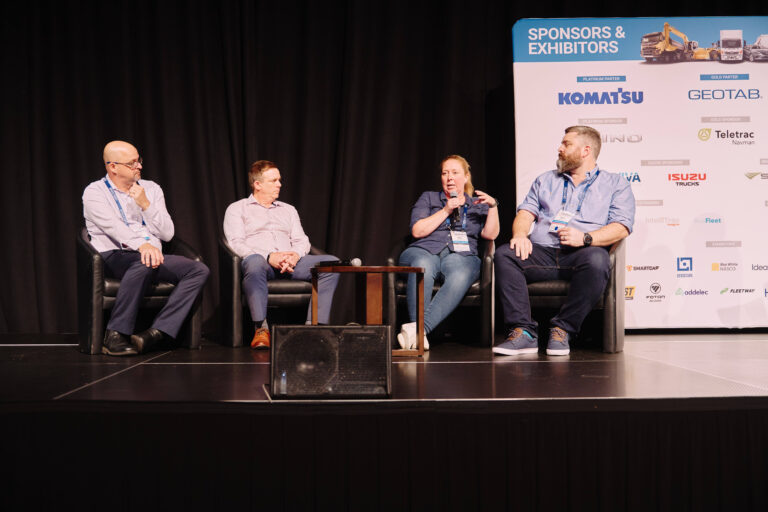The 2025 IPWEA Fleet Conference in Brisbane wrapped up with a powerful session led by members of the IPWEA Fleet Council. These seasoned professionals distilled the best ideas, learnings, and practical actions from two packed days into one final conversation. The goal? Help fleet practitioners return to their organisations with a renewed sense of purpose—and a to-do list that improves their fleet maturity.
Here’s what you can do on Monday morning (well, maybe after your coffee) to take your fleet function to the next level.
1. Step Back and Look at the Big Picture
Ryan Brumley, from City of Greater Geelong, reminded us that it’s easy to get caught in the weeds—policy reviews, leasebacks, EV transitions. But how often do you take a moment to evaluate your fleet holistically?
“The one practical thing I’ll be doing is sitting down and realising where my fleet is at. Maybe build a bit of an idea and do a plan base.”
Action: Schedule time to reflect. Take stock of your fleet size, usage, age profile, and alignment with operational needs. This reset can be the foundation for your next improvement plan.
2. Bring the Organisation Along
Kate Kennedy, Fleet Manager – VIC/SA at Cleanaway Waste Management, hit home with a critical point—fleet isn’t just about vehicles, it’s about enabling services.
“We need to make sure that the organisation understands why we do what we do.”
Action: Don’t assume internal stakeholders know the value fleet brings. Improve your internal communications. Run short briefings. Show how effective fleet management improves service delivery.
3. Keep Business Continuity Plans Current
Thomas Brayley, Plant Fleet Services Manager at Logan City Council, emphasised the importance of being ready for the unexpected.
“Your business continuity plan shouldn’t be a document you pick up once a year. It needs to be reviewed as often as your capital delivery plan.”
Action: Dust off your continuity plan. Review it for gaps, check your asset readiness in case of disaster, and ensure you’ve got resources in place to support operations.
4. Optimise Utilisation Before You Electrify
Michael Kenyon, City of Gold Coast, reinforced that electrification isn’t the first step—it’s further down the track.
“There’s no use replacing something with new technology if you don’t need it.”
Action: Dive into your telematics data. Identify underutilised assets. Rationalise the fleet before investing in EVs or tech-heavy solutions.
5. Use Your Fleet Improvement Plan Properly
Fleet improvement plans aren’t just shelfware—they should be dynamic and data-driven. Ryan Brumley and Kate Kennedy both flagged utilisation and fleet right-sizing as top priorities.
“Until you really look at what you’ve got on the ground—do you need it, why do you have it—you won’t see big savings.”
Action: Prioritise fleet utilisation in your next improvement plan. Use data to identify surplus, underused or misallocated vehicles. Create a strategy to reassign, pool or dispose.
6. Manage the Change, Don’t Just Announce It
Reducing fleet size or removing assets is a sensitive issue. Thomas Brayley offered practical advice from real-world experience.
“It’s a change management process. You need to consult with managers and support them with sound business cases.”
Action: Don’t just send a memo about asset cuts. Benchmark utilisation, engage stakeholders early, and establish clear criteria for retention. It’s about alignment, not surprise.
7. Focus on Uptime for Critical Assets
Michael Kenyon also flagged a key point often overlooked in the buzz around sustainability—fleet maturity means reliable operations.
“When critical vehicles like garbage trucks or compactors go down, it impacts services—and questions come from elected officials.”
Action: Identify your critical assets. Understand their maintenance profile. Track downtime and work towards improving reliability through procurement and servicing strategies.
8. Embrace the Power of Networking
Every council member agreed that the connections made at the conference were just as valuable as the content.
“We’re all doing the same thing, but doing it differently. You don’t need to reinvent the wheel—just know who to call.”
Action: Follow up with your new contacts. Reach out. Share challenges. Learn from peers. The fleet community is one of your most underused resources.
Final Thought: Take the First Step
Fleet management maturity doesn’t come from one big change. It’s the result of many small, consistent improvements—reviewing policies, using data better, updating plans, collaborating internally, and investing in professional development.
The good news? You don’t have to wait. Pick one of these actions and make it your first step on Monday morning.
And don’t forget—next year’s IPWEA Fleet Conference is heading to Melbourne from March 23–25, 2026. Put it in your calendar now. Because if there’s one thing this year’s conference confirmed, it’s that fleet practitioners rock.






